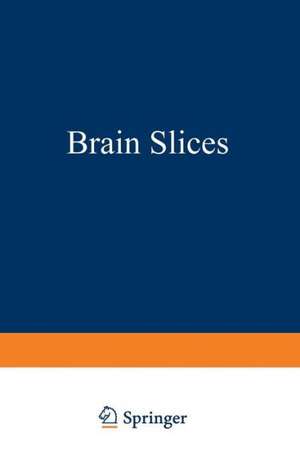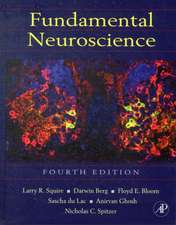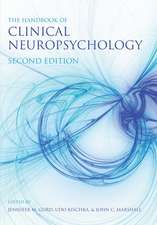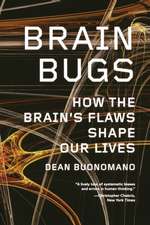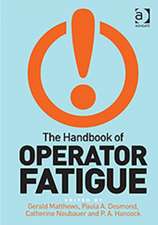Brain Slices
Autor Raymond Dingledineen Limba Engleză Paperback – 15 iun 2012
Preț: 647.59 lei
Preț vechi: 761.87 lei
-15% Nou
Puncte Express: 971
Preț estimativ în valută:
123.95€ • 128.91$ • 103.87£
123.95€ • 128.91$ • 103.87£
Carte tipărită la comandă
Livrare economică 13-27 martie
Preluare comenzi: 021 569.72.76
Specificații
ISBN-13: 9781468445855
ISBN-10: 1468445855
Pagini: 464
Ilustrații: XVIII, 442 p. 50 illus.
Dimensiuni: 152 x 229 x 24 mm
Greutate: 0.62 kg
Ediția:Softcover reprint of the original 1st ed. 1984
Editura: Springer Us
Colecția Springer
Locul publicării:New York, NY, United States
ISBN-10: 1468445855
Pagini: 464
Ilustrații: XVIII, 442 p. 50 illus.
Dimensiuni: 152 x 229 x 24 mm
Greutate: 0.62 kg
Ediția:Softcover reprint of the original 1st ed. 1984
Editura: Springer Us
Colecția Springer
Locul publicării:New York, NY, United States
Public țintă
ResearchCuprins
Introduction: Cerebral Subsystems as Biological Entities.- 1. Comparative Electrobiology of Mammalian Central Neurons.- 1. Introduction.- 2. The Generalized Neuron.- 3. Electrophysiology of the Neuronal Somata.- 4. Dendritic Electrophysiology.- 5. Discussion.- 6. References.- 2. Passive Electrotonic Structure and Dendritic Properties of Hippocampal Neurons.- 1. Introduction.- 2. Electrotonic and Circuitry Models—An Overview of Methods.- 3. Models Constructed with Data from Work on Hippocampal Slices.- 4. Discussion.- 5. References.- 3. Biophysics and Microphysiology of Synaptic Transmission in Hippocampus.- 1. Motivation for Studying the Biophysics and Microphysiology of Cortical Synapses.- 2. Criteria for Selecting a Suitable Cortical Synaptic Preparation.- 3. Development of Voltage-Clamp Techniques for Application to Hippocampal Synapses.- 4. Current- and Voltage-Clamp Studies of Evoked Synaptic Events in Hippocampal Neurons.- 5. Current- and Voltage-Clamp Studies of Spontaneous Miniature Synaptic Events in Hippocampal Neurons.- 6. Implications for Performing a Quantal Analysis of Evoked Release.- 7. Significance for Selected Problems in Cortical Physiology.- 8. References.- 4. Hippocampus: Synaptic Pharmacology.- 1. Introduction.- 2. Localization of Transmitters and Endogenous Neuroactive Agents in the Hippocampal Formation.- 3. Cellular Actions of Neuroactive Drugs in Hippocampal Slices.- 4. Conclusions and Future Directions.- 5. References.- 5. Energy Metabolism and Brain Slice Function.- 1. Introduction.- 2. Integrity of the Slice Preparation.- 3. Mechanism of Anoxic Damage.- 4. References.- 6. Hippocampus: Electrophysiological Studies of Epileptiform Activity in Vitro.- 1. Introduction.- 2. What Enables Some Cells to Fire Bursts Readily?.- 3. Why Do Cells ThatCan Fire Burst Potentials Not Do So All the Time?.- 4. How Does Synchronization of Firing within a Population of Cells Occur?.- 5. What Triggers the Switch from Interictal Spiking to Seizures?.- 6. How Can a Seizure Spread from Epileptic Tissue across Normal Tissue?.- 7. Conclusions.- 8. References.- 7. Correlated Electrophysiological and Biochemical Studies of Hippocampal Slices.- 1. Introduction.- 2. Modification of Stimulation Procedures and Slice Techniques for Biochemical Experiments.- 3. Hippocampal Long-Term Potentiation.- 4. Influences of High-Frequency Stimulation on 3H-Glutamate Binding to Synaptic Membranes.- 5. High-Frequency Stimulation and Protein Phosphorylation.- 6. Summary.- 7. References.- 8. Optical Monitoring of Electrical Activity: Detection of Spatiotemporal Patterns of Activity in Hippocampal Slices by Voltage-Sensitive Probes.- 1. Introduction.- 2. Optical Monitoring of Changes in Membrane Potential.- 3. Optical Recording from Brain Slices.- 4. References.- 9. Probing the Extracellular Space of Brain Slices with Ion-Selective Microelectrodes.- 1. Introduction.- 2. The Brain Cell Microenvironment.- 3. Extracellular Ion Changes Produced by Simultaneous Activity of Ensembles of Neurons.- 4. Extracellular Ion Changes Evoked by Individual Cells.- 5. Prospects and Problems.- 6. References.- 10. Electrophysiological Study of the Neostriatum in Brain Slice Preparation.- 1. Introduction.- 2. Methods.- 3. Results and Discussion.- 4. References.- 11. Locus Coeruleus Neurons.- 1. Introduction.- 2. Methods.- 3. Results.- 4. Discussion.- 5. References.- 12. Neocortex: Cellular Properties and Intrinsic Circuitry.- 1. Introduction.- 2. Early Use of Neocortical Slices.- 3. Notes on Neocortical Slice Methodology.- 4. Properties of Neocortical Slices.- 5. Conclusions.- 6. References.- 13. Hypothalamic Neurobiology.- 1. Introduction.- 2. The Development of the Hypothalamic Slice Preparation.- 2.1. Motivating Factors.- 2.2. Early Problems Encountered.- 3. Hypothalamic Slice Preparations and Their Uses.- 4. Summary and Conclusions.- 5. References.- 14. Brain Slice Work: Some Prospects.- 1. Introduction.- 2. Optimal Conditions.- 3. Slices from New Regions.- 4. New Uses of Slices.- 5. New Approaches in Slice Experiments.- 6. The Need for Correlation.- 7. References.- Appendix: Brain Slice Methods.- 1. Introduction.- 2. Preparation of Slices.- 2.1. Slicing the Brain.- 2.2. Slice Chambers.- 2.3. Bathing Medium Composition.- 2.4. Slice Thickness.- 3. Evaluation of Slice Data.- 3.1. General Remarks.- 3.2. Electrophysiology.- 3.3. Histology.- 3.4. Metabolism.- 3.5. Spreading Depression.- 4. Methods of Drug Application.- 4.1. Superfusion.- 4.2. TheNanodrop.- 4.3. Iontophoresis.- 4.4. The Pressure Pipette.- 4.5. Summary.- 5. Concluding Statement.- 6. References.
